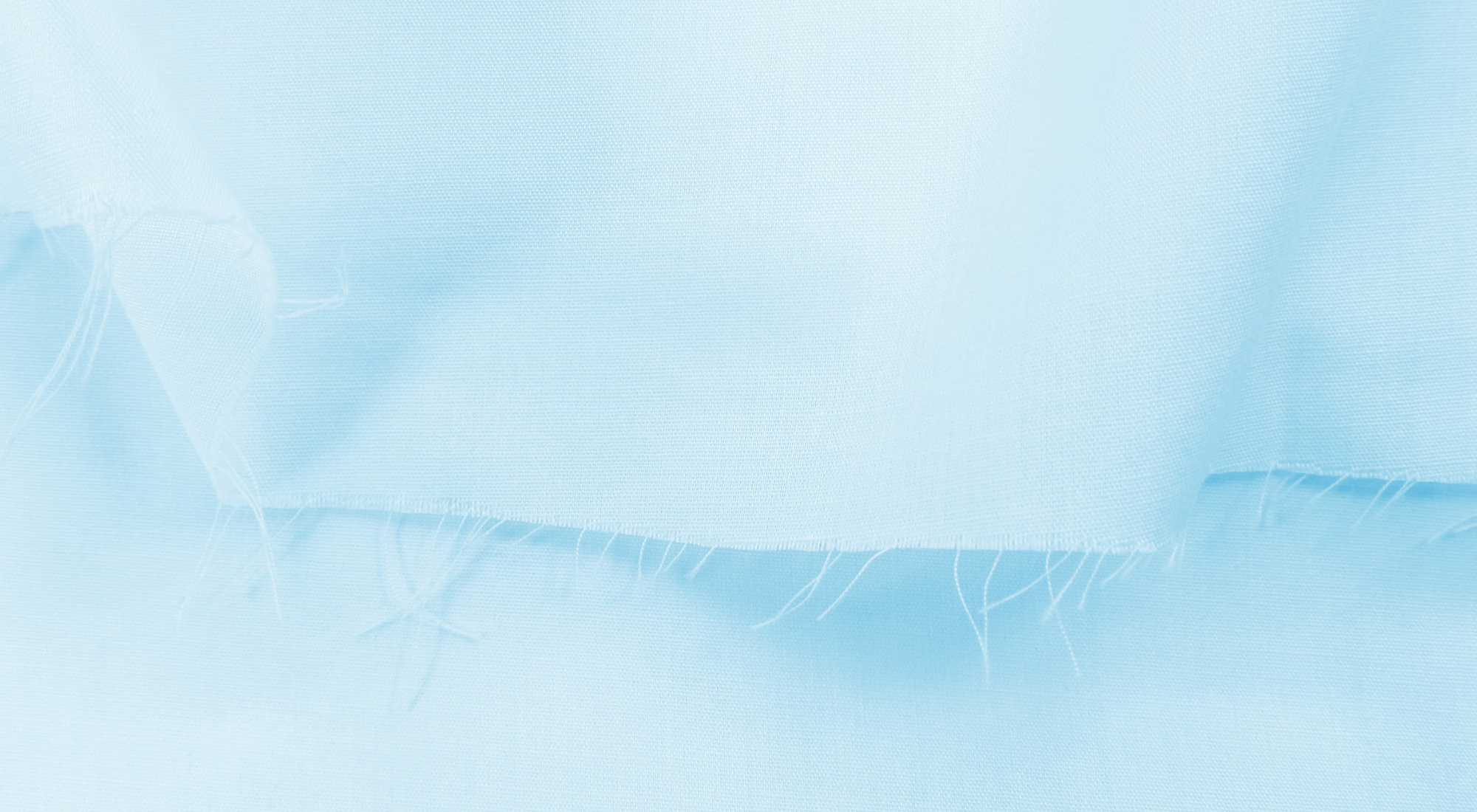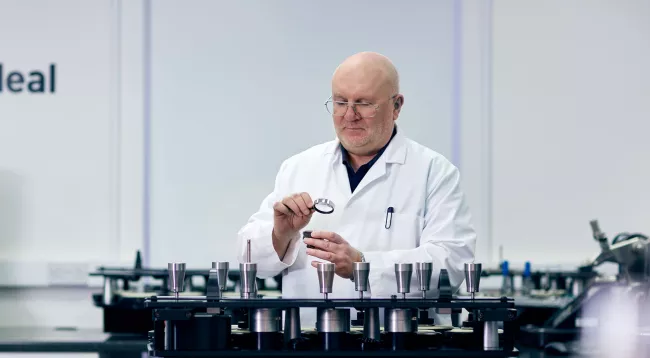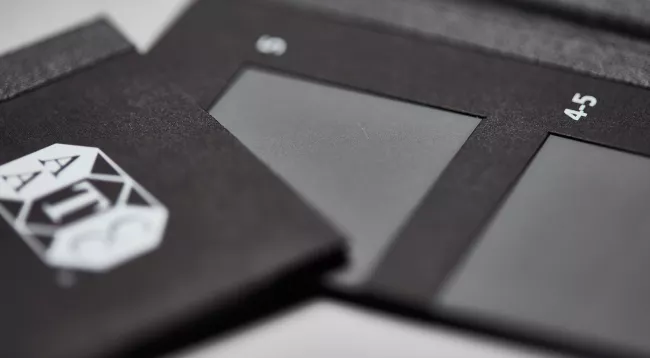Our Technical Specialist Peter Goodwin recently conducted a webinar about Tear Testing of textile fabrics, where our attendees asked lots of interesting questions.
We have compiled all the questions together and have hopefully answered everything you need to know below.
Either click on the keywords that interest you to take you to the relevant question, or scroll down to read every question.
- Load cells for upholstery/drapery for wing-rip testing
- Reduction in tear strength when adding coating/membranes
- Method for elastane content fabrics
- Load cell and test method for packs/bags
- How to calculate Tear Energy Equation
- Test Method for woven wool
- Testing kevlar reinforced denim
- Test method for bed linen fabric
- Testing the damage in elastane denim
- Checking the 20% measure point of load cells
- Calibration on load cells
- Calculating peaks
- Stopping the test in ASTM D2261
- Determining the correct load cell
- Does tear depend on fabric GSM?
- Tear testing nonwoven fabrics
- Elmendorf vs Tensile Machines
- How to decide on a test method
- The role of ply in tear testing
- Stretchable fabrics and fabrics with open construction
- Tear testing on fabrics with elastane
- The role of the pendulum on the elmendorf
- Correlation between methods
- ISO 13937-2 vs ISO 13937-4
- Ignoring peaks on trouser tear and wing rip
- Light, medium and heavy denim
- Testing cotton velvet fabrics
- High stretch fabrics and the elmendorf
- Testing elastane fibres
- Cutting the fabric before testing
- Load cells for fabrics with tear strength of 10/100N
- How slippage is displayed on graphs
Q: We are using load cells of 250 newton and 2000 newton to test upholstery and drapery on the test method wing-rip, is this ok?
A: Using higher capacity load cell depends on what results you are trying to achieve. You need to think about how a load cell is calibrated according to ISO 7500, the first point of calibration is at 20%. If tear strength value falls within that bottom 20% then you should be using a lower capacity load cell. The 20% rule is always a good rule of thumb, if the value is in the bottom 20% use a lower capacity loadcell.
Q: I have had some results showing a reduction in tear strength when adding coatings and membranes. Is this common and do you know what causes this?
A: Adding coatings and membranes often reduces tear strength as it reduces the mobility of the yarns. The yarns slip over each other which increases the tear strength but adding a coating or membrane will frequently reduce the tear strength.
Q: Which method do you recommend for elastane content fabrics?
A: I would definitely not recommend the Elmendorf test. If the fabric contains elastane, when you tear fabric, the distance of 43mm will change with fabric that will stretch considerably, thus the tear force calculation will be incorrect. One of the methods ISO 13937 parts 2 or 3 might be more appropriate, probably part 2 will be best for this application.
Q: How do you know what the right load cell is and what test method would you recommend for equipment such as packs and bags?
A: The choice of load cell really relates to a tensile testing machine, the choice depends on your fabrics or applications. You need to know which test you will be carrying out. It is all about capacity versus the force value of the test you are going to achieve.
The strength is likely to be high so the results will be high meaning carrying out tensile tests and de-lamination tests for coatings on that equipment. I would suggest using a constant rate of extension instrument such as Titan.
Q: How can I calculate the Tear Energy Equation?
A: Energy is the MGH. The basic equation is Mass x Gravity x Height.
Q: Which is the best test method for woven wool?
A: This may depend on whether it is your own brand or whether you are producing for another company. For example, denim is often tested by the Elmendorf method
Q: Can we test Kevlar reinforced denim at a few hundred newton tear strength and what is max test speed?
A: Our ElmaTear (Elmendorf) can test up to 280 Newtons. On the CRE tester, the speed for tear testing is 100 mm per minute for ISO tests and for ASTM methods 300 mm per minute. I would recommend using Titan as it can operate up to 1000 mm per minute, but carrying the tests according to that defined in the chosen standard.
Q: Which method would you use for testing bed linen fabric?
A: Closely woven fabric lends itself to the Elmendorf technique, because of this I would recommend using the Elmendorf tester.
Q: We want to test how badly damaged the elastane in a denim is, is there a method suitable for this?
A: If assessing damage in elastane, maybe a stretch and recovery test would be better than tear strength, this way you can get a sample of fabric before and after the damage treatment, and you could evaluate the stretching and recovering and calculate the percentage change from before to after.
Q: How can we check the 20% measure point of our load cells?
A: This is done by the calibration engineer. When our engineers service and calibrate your machine they will do this.
Q: Can we perform calibration before each test to check the load cell?
A: You can verify the readings are correct by using a set of verification weights which connect to the load cell. You can check the reading of each one and can see the correct weight is recorded. You can use this as a method to check for drift to see if the weight recorded is changing etc.
Q: When calculating peaks, is there a threshold by which the force must drop to be considered a valid peak?
A: In many of the standards, including the ISO 13937 parts 2, 3 and 4, a peak is described as 'where the force drops by 10%'. So, if the force drops by 10% or more during a test, this can then be classed a valid peak.
Q: In some tests the operator should stop the test when it reaches the mark on the specimen, can it not do it itself?
A: The machine can do this. If you refer to ASTM D2261, this method has two options you can either tear to a mark on specimen or prescribed distance. The machine will then stop at the required distance if you set to prescribed distance. The ISO standards still say 'when reaches stop mark'
Q: Can you please discuss about load cell calibration for a CRE machine? How to determine correct load cell for a particular fabric without measuring GSM?
A: You would need to have some idea of what sort of tearing force you would expect. If you expect results of 20 Newtons then you would use a more appropriate load cell. If you use a 5000 load cell for all then the resolution is less at low force such as 20N.
Q: Does tear depend on fabric GSM?
A: In general yes it does. A fabric with higher weight will typically have a higher tear strength than a lighter weight fabric.
Q: Does tear testing apply to nonwoven fabrics?
A: It does yes. I didn't mention nonwovens just to keep it simple. We can test nonwoven fabrics, using either the Elmendorf or the trapezoidal techniques.
Q: What is the difference between the Elmendorf and a tensile machine?
A: The videos demonstrate the difference between the two instruments. The Elmendorf tears the specimen very quickly, the defined specimen size and calculation is always the same even for different types of materials. Always testing 43mm. Titan is usually testing at much lower rate (speed) of tear propagation.
Q: How do you know when to use which method over another?
A: I would always start with the performance specification which often states what the tear strength requirements are and what test method (standard) should be used. Not to specify a method in a fabric specification is quite dangerous and could lead to 'incorrect' results because of using the wrong method. If you don't know how you should test, then it often depends on equipment available in the Laboratory.
Q: Can you explain about the role of ply in tear testing?
A: In textiles we usually do this on the Elmendorf technique. In textiles, certainly in woven fabrics we tend not to use ply, but if we have a machine with a certain capacity, and if we have a very thin material (of very low tear strength), then adding multiple ply's (layers of test specimens) increases the force and therefore we are able to test something that was originally out of the range of the machine. Note: the use of multiple plies can lead to different results when compared to single ply.
Q: For stretchable fabrics and fabrics with open constructions, often the tear on stretch fabrics is not complete in both Elmendorf and tongue tear, what does one have to look at? Also with respect to slightly open fabric constructions, the yarn bunch at delta but tend to slip off without tear, what does one take it from yarn pullout/slippage?
A: GOOD QUESTION. For open fabrics and elastic, you can see from what has been sais so far above the Elmendorf test that the 43 mm distance is important, is it is an integral part of the calculation. If the fabric contains elastane yarns or considerable stretch then this distance will effectively be increased.
This doesn't mean the rules won't be applicable as long as you can appreciate the fabric has stretched but you have achieved a particular result then it can still be useful measure. If the fabric is loosely constructed then the yarns can slip very easily meaning we don't always get a good (valid) test result from that because we get the slippage and bunching together. It can then be difficult for the choice of method in that case.
With regards to slippage, you might not see peaks in the trace, you may just see a line which could be in waves rather than peaks. We still look at this trace in the same way, so we may look at the maximum force achieved along that line and if it gives any type of peak, even if it is in waves, we can still analyse the trace, even though there are no definitive peaks.
An important point to note about any tear test is that if the tear does not complete in the expected way then the result will be invalid.
For example, if the specimen fails to tear completely through the specimen (the specimen is not divided into two halves); the tear diverges from the straight line tear path expected which could be a result of tear transfer (cross tear) or incorrectly prepared specimen (due to bow and skew) - then any values obtained from the instruments should not be quoted in the test report as it is probably meaningless, it is the observation which should be reported, for example, 'tear transfer', 'not tearable under test conditions' should be used.
If agreement can be made with the other party then an alternative method of test should be used, one which gives a valid tear result.
Q: Is tear testing suitable for fabrics containing elastane and which method would give the best result?
A: The Elmendorf tester is probably not suitable for fabrics containing elastane, but the CRE tester such as Titan can probably accommodate stretch without any problems because it doesn't use a particular distance in its calculation of the tearing force.
Q: In Elmendorf tearing, does the pendulum used affect the test result or just the accuracy?
A: In most Elmendorf test methods, you will probably see that it will tell you to use a pendulum where the result falls between a particular range of the full scale reading. For example, ASTM D1424 says that results should be between 20% and 80% of the scale, if the result falls below 20% then a lower weight pendulum should be used. If the reading is above 80% then a heavier weight pendulum should be used.
If you have multiple pendulums available, then it is best to use one that falls nicely within that range, somewhere in the middle if possible, and not at the extreme ends of the range. If you have a higher/greater weight on the pendulum, due to the equation that is used (m.g.h), there is more potential energy in the higher weight, meaning it will fall faster, which could increase the tear strength value.
Q: I think there is some similarity between 'trouser' and 'wing-rip', is there a correlation with these and Elmendorf?
A: It is very difficult to talk about correlations between methods because a lot depends on the fabric construction. You may find that plain weaves correlate quite well from the Elmendorf to the trouser tear, but then if you do the same with a satin weave fabric the results are not so easily correlated. In general you cannot say there is a correlation.
Q: What would be the deciding factor to choose one tear test over the other? For example the Trouser tear ISO 13937-2 versus ISO 13937-4
A: As the webinar shows, it is very difficult to say that one method is better than another. Usually depending on the end use, especially if the fabric has a specification or the results required have been given by a retailer and they quote the test method. For apparel, the part 2 method would be used, the tongue tear test would be used for stronger fabrics such as military or technical fabrics.
Q: On the trouser tear and wing-rip, is there a reason to ignore the first section of peaks?
A: Usually this comes from the way the fabric is reacting to being pulled at the start of the test, so differences can arise. Quite often, the first part of the tearing trace can look different than the remaining part of the trace. The ISO committee decided we should ignore this erratic behaviour at the beginning of the test and then concentrate on the part which is more consistent. It is all to do with the way the fabric is lining up as it is being pulled under tension.
Q: What does it mean in denim when you say 'light, medium and heavy'?
A: This is based on the weights of the fabric, the grams per metre squared, or ounces per square yard. ASTM D6554 specifies the performance requirements of different denims weights.
Q: What test method would you recommend for Cotton velvet fabric?
A: That would depend on the end use of the fabric. If it was for upholstery then the wing rip method, if it was for clothing then perhaps the Elmendorf test or trouser tear test.
Q: Can fabrics with high stretch be tested using the Elmendorf method?
A: Yes, but I would like to qualify it as in essence what we are talking about with the Elmendorf technique is tearing through a set distance, and with a stretch fabric that distance is going to change! If the method is specified, and the specifier understands the limitations then the results can have some meaning.
Q: How can we test and ensure the accuracy of a fabric with elastane fibre?
A: To ensure accuracy, potentially the best way would be to use a CRE tester rather than and Elmendorf.
Q: Why do you cut into the fabric when testing?
A: This is a simple answer. If you were to try and tear the fabric without cutting beforehand it would be very difficult and then you would be carrying out a different type of test which would almost be a tensile test. A tear starts with a snag on clothing etc., then the fabric has a small cut in it, so if the force continues the fabric will then tear. The cut before testing is to help with tear propagation.
Q: What type of load cell to use and calibration certificate to request if we have test fabrics with tear strength between 10 and 100 newtons?
A: Between 10N and 100 N then I would use 200 newton load cell, or potentially a 100N and a 200N if available. 100N would test 10 newton results more accurately. The calibration certificate would be made according to ISO 7500-1.
Q: If slippage occurs, how is this shown on the graph?
A: If at any point slippage occurs you would usually see a minute drop in force. This is difficult to see in a tear test as the force is rising and falling all the time. If slippage does occur then the drop in force could be misinterpreted as a peak. It would be shown as a straight vertical line.
We hope these questions and answers around Tear Testing have been helpful. If you want to find out more about the two instruments mentioned in the question above, ElmaTear and Titan, please contact us.












